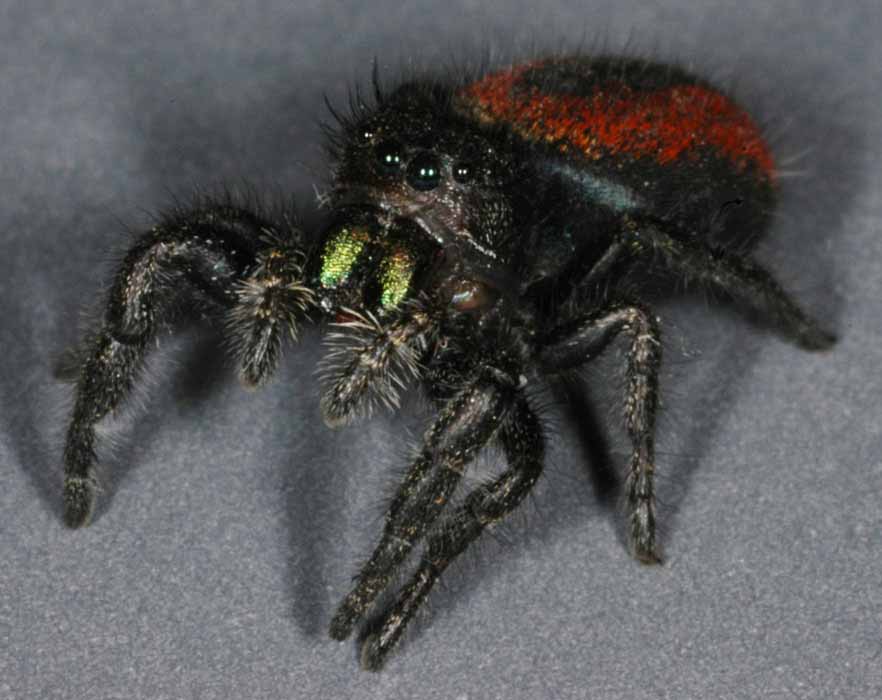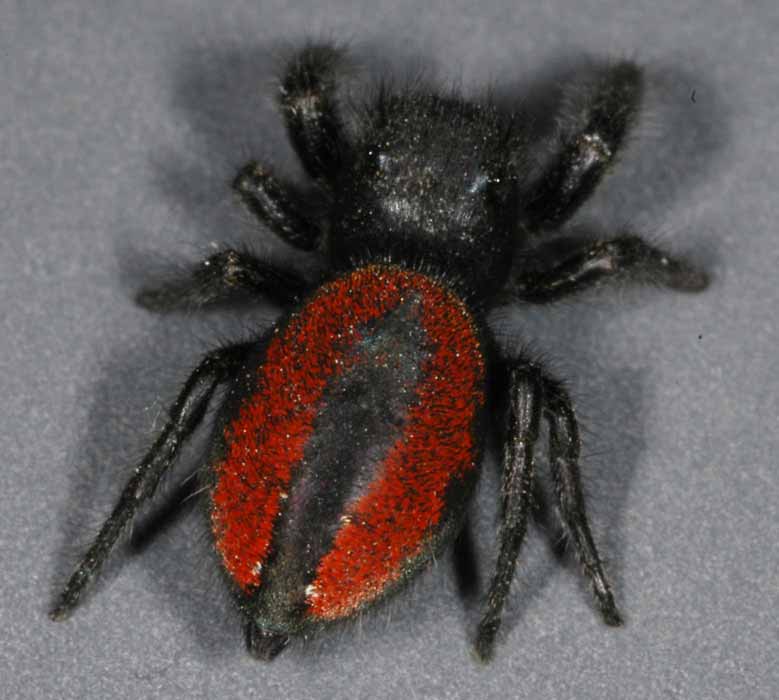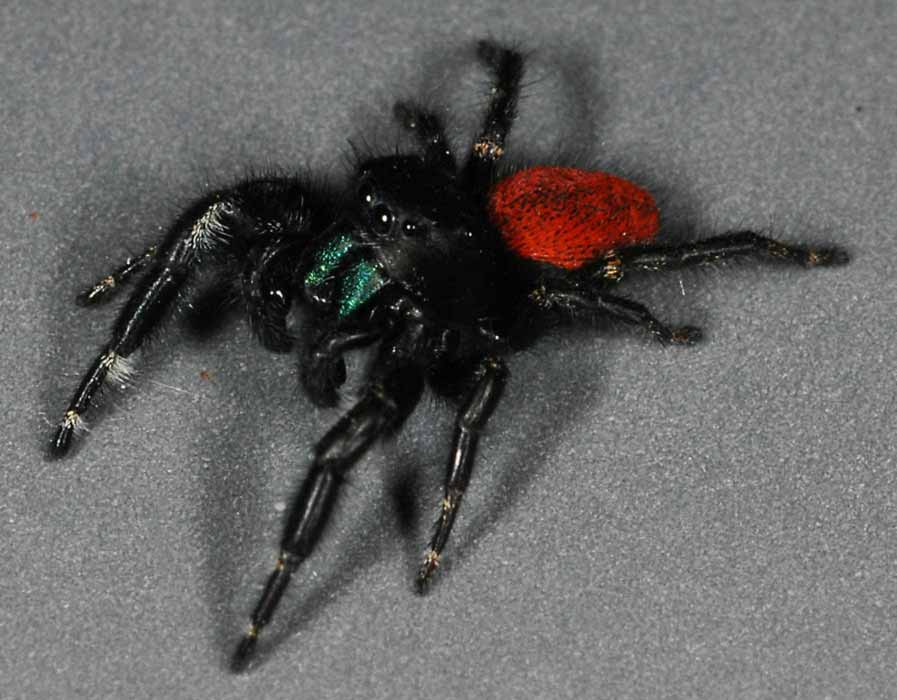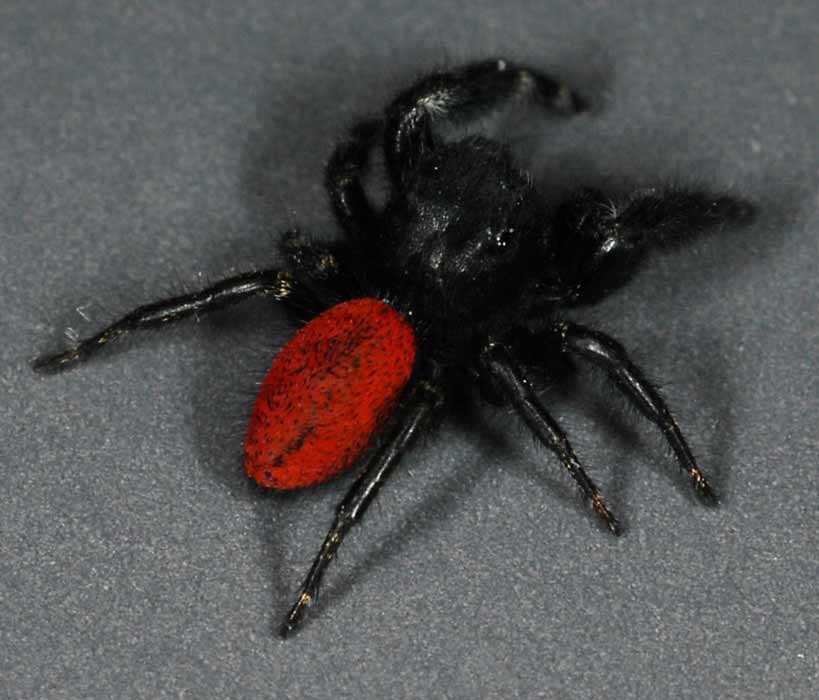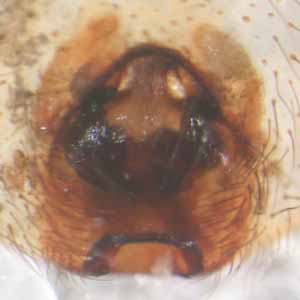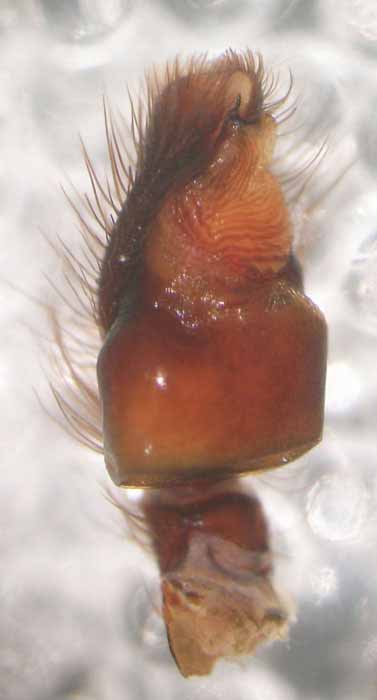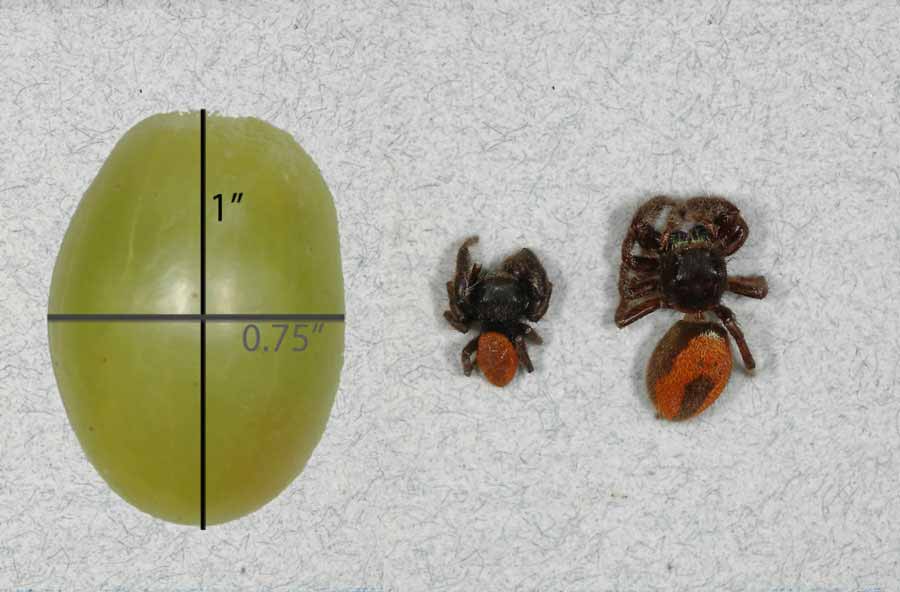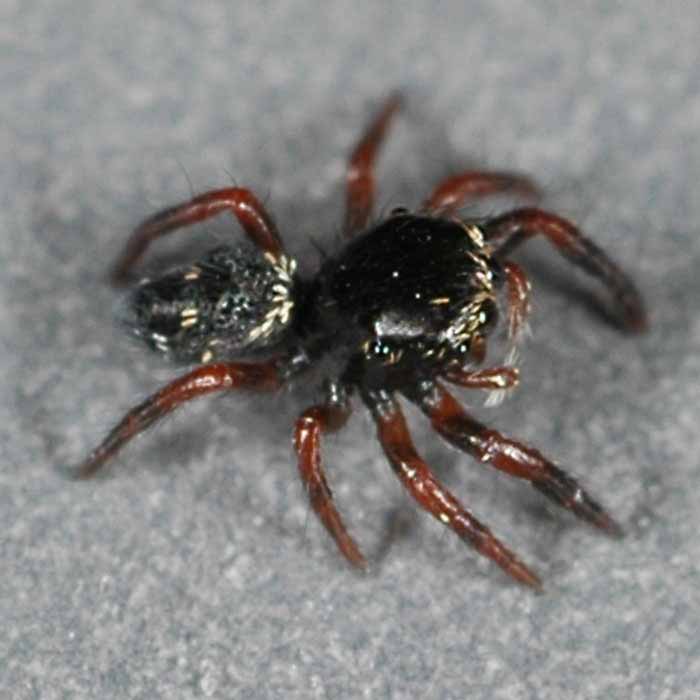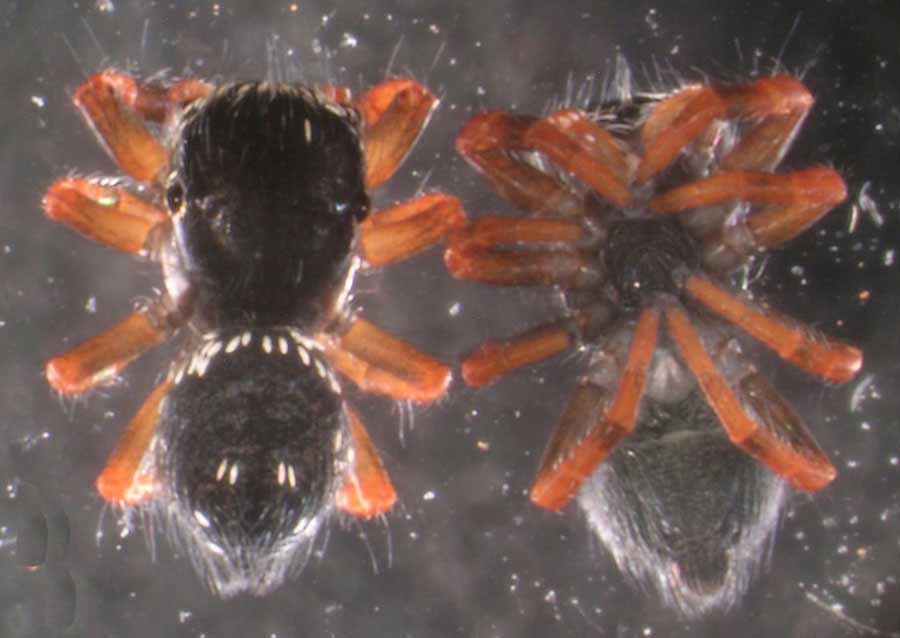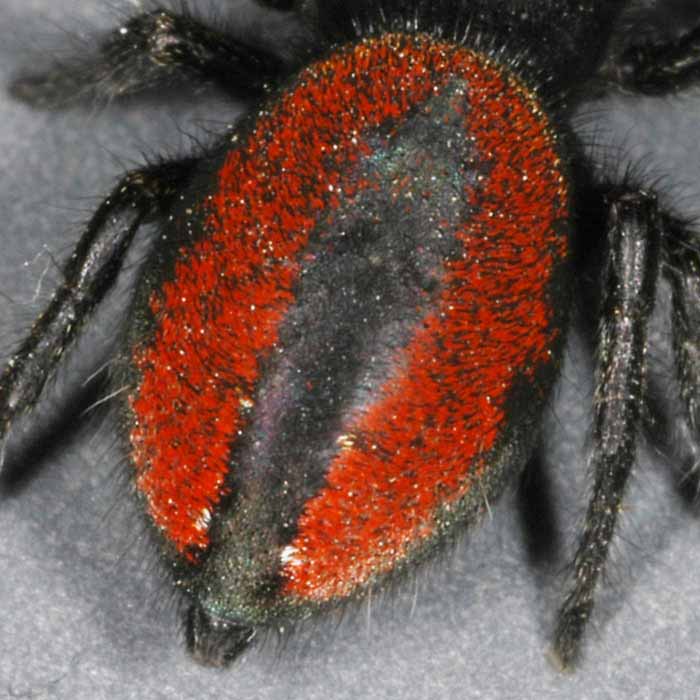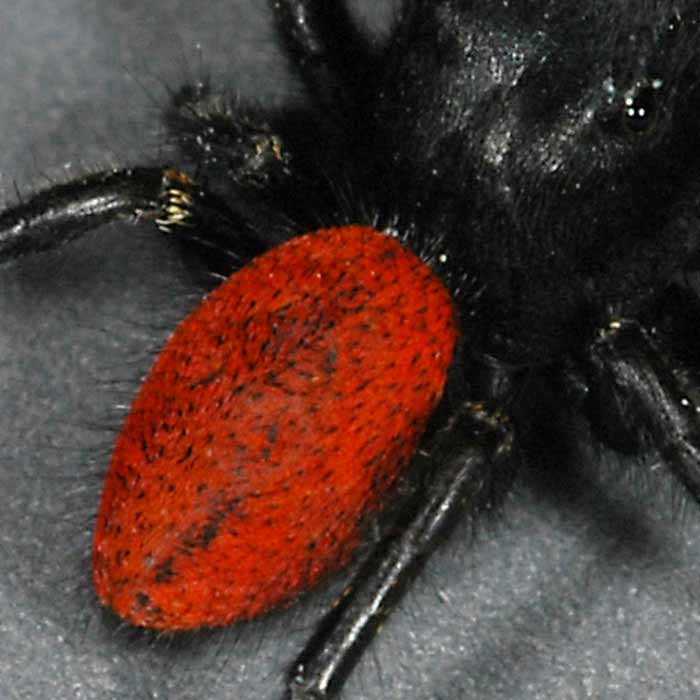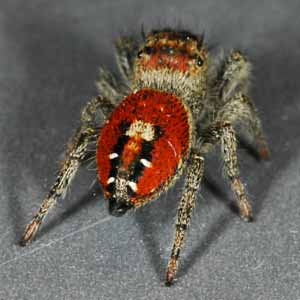Phidippus johnsoni
|
adult female, live; face view |
|
adult female, live; dorsal view |
|
adult male, live; face view |
|
adult male, live, dorsal view |
|
female genitalia; epigynum |
|
male genitalia; palp, lateral view |
|
male genitalia; palp, ventral view |
|
grape size comparison with adult spiders; male (left), female (right) |
|
spiderling, live |
|
spiderlings, dead; dorsal (left), ventral (right) |
|
diagnostic feature; female dorsal abdomen red with black longitudinal stripe |
|
diagnostic feature; male dorsal abdomen completely red |
|
juvenile female, live |
Current valid name
Phidippus johnsoni (Peckham & Peckham) (family Salticidae)
Recognition and diagnostic features
Squat jumping spider body with short legs, black cephalothorax, brilliant cherry red abdomen in adults, male abdomen completely red dorsally, female abdomen red dorsally with a black longitudinal black stripe on the posterior half, iridescent green chelicerae.
Related or similar species
Phidippus clarus
Spider
Body lengths when mature: male: 6.2 to 10.7 mm, female: 9.0 to 14.2 mm
Both matures have jet black cephalothorax, male has entirely red abdominal dorsum, female has red abdominal dorsum with black longitudinal stripe on posterior half. Immatures have very different markings (mixture of white and black lines, hash marks, and dull red coloration) and may look very similar to other Phidippus immatures.
Egg sac
Number of eggs per sac: 67.1 ± 26.4
Number of egg sacs per female lifetime: 3.1
Time of year eggs are likely to be laid: probably April and May
Distribution
In California: ubiquitous
Elsewhere: western North America from the Rocky Mountains to the Pacific Coast
Native to North America
This species has not been transported or become established outside of its range.
Biology
Diurnal jumping spider, prey hunted down and taken using excellent eyesight.
Status in table grapes
Level of Incidence: sporadic but can be abundant in specific vineyards
Level of Concern in New Zealand: WPNZ (MAY 2010) R, BORIC (Dec 2011) R, MAF-BPRA (2002) R (coding definition)
Level of Concern in Australia: WPAU (2006) nr (coding definition)
Level of Medical importance: aggressive biter with strong fang musculature, most injury is likely due to mechanical fang puncture not venom toxicity
Common name
Johnson jumping spider for species, jumping spiders for family
Taxonomic history
Although P. johnsoni has been a valid species for a long time, other species (such as P. formosus) have been synonymized under its name.
Selected references
Edwards, G. B. 2004. Revision of the jumping spiders of the genus Phidippus (Araneae: Salticidae). Occasional Papers Florida St. Coll. Arthropods 11: 1-156.
Jackson, R. R. 1978. The life history of Phidippus johnsoni (Araneae: Salticidae). J. Arachnol. 6: 1-29.
Russell, F. E. 1970. Bite of the spider Phidippus formosus: case history. Toxicon 8: 193-194.

